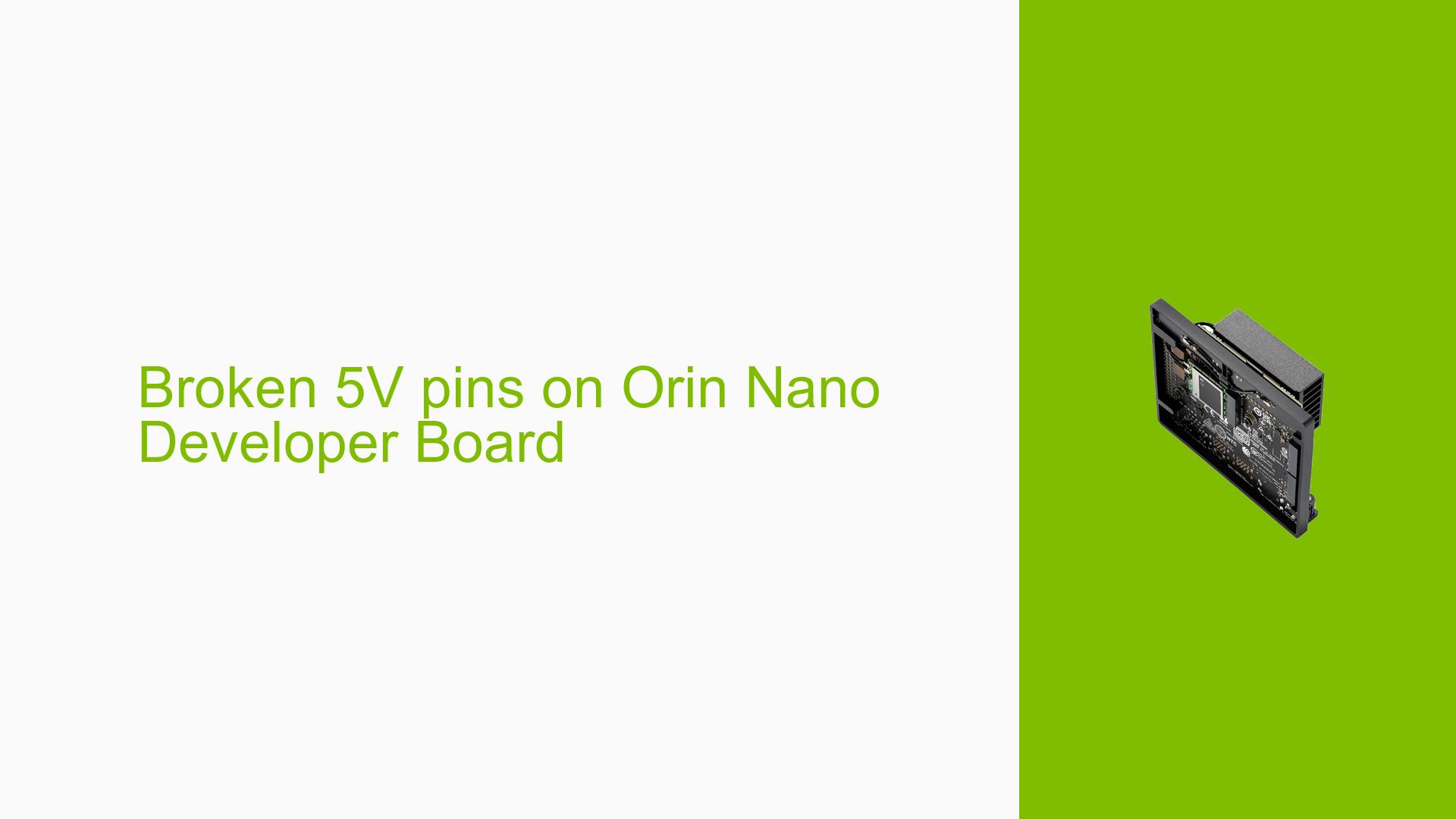Broken 5V pins on Orin Nano Developer Board
Issue Overview
Users of the Nvidia Jetson Orin Nano Developer Kit are experiencing issues with the 5V pins on the J40 connector. The symptoms include:
- Voltage Drop: When a load is applied to the 5V pins, the voltage drops significantly from ~5V to between 1V and 2V, rendering them unable to power any devices.
- Normal Functionality at No Load: Both 5V pins read approximately 5V when unloaded, indicating that the pins are functioning correctly until a load is introduced.
- 3.3V Pins Functioning: The 3.3V pins continue to operate normally, reading ~3.3V with and without load.
- Behavior in Sleep Mode: When the "auto on" feature is disabled by shorting J14 pins 5 and 6, the 5V pins provide ~5V when the device is powered on but off (sleep mode), while the 3.3V pins remain inactive until the device is turned on.
This issue appears to be localized to the 5V supply circuitry, particularly around the J40 connector, as other system functionalities remain intact.
Possible Causes
Several potential causes for this issue have been identified:
-
Hardware Defects: Components within the red-circled area of the mosfet circuit may have failed, leading to insufficient power delivery on the 5V pins.
-
Configuration Errors: Incorrect settings or modifications in hardware configurations might affect voltage output.
-
User Errors: Improper connections or configurations during setup could lead to unexpected behavior.
-
Environmental Factors: Overheating or power supply issues could potentially damage components responsible for regulating voltage.
Each of these causes can lead to a failure in delivering adequate power through the 5V pins when a load is applied.
Troubleshooting Steps, Solutions & Fixes
To address the issue with the 5V pins on the Orin Nano Developer Board, users can follow these troubleshooting steps:
-
Initial Diagnosis:
- Measure voltage at the 5V pins with and without load using a multimeter to confirm symptoms.
-
Inspect Hardware:
- Visually inspect the board for any burnt or damaged components, especially in the mosfet circuit area indicated in replies.
-
Testing Components:
- If comfortable with hardware repairs, consider testing components in the red-circled area for continuity or damage.
-
Shorting D & S of Q23:
- If hardware knowledge permits, shorting the Drain (D) and Source (S) of Q23 can bypass faulty components. However, this will remove reverse voltage protection for the 5V pins:
Short D and S of Q23 (use caution). - This method is risky and should only be used if other solutions are not viable.
- If hardware knowledge permits, shorting the Drain (D) and Source (S) of Q23 can bypass faulty components. However, this will remove reverse voltage protection for the 5V pins:
-
Component Replacement:
- For those with sufficient technical skills, replacing damaged components in the mosfet circuit may restore functionality.
-
Testing Alternative Loads:
- Test different loads on the 5V pins to ensure that it’s not a compatibility issue with specific devices.
-
Documentation Review:
- Consult Nvidia’s official documentation for any updates regarding known issues or fixes related to power supply problems.
-
Best Practices for Future Use:
- Ensure proper ventilation and avoid overloading power outputs during operation to prevent similar issues in future use.
-
Seek Professional Help:
- If none of these solutions work or if users are uncomfortable performing hardware repairs, consider reaching out to Nvidia support or authorized repair services.
By following these steps, users can diagnose and potentially resolve issues related to non-functional 5V pins on their Jetson Orin Nano Developer Board.
